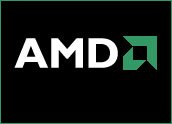
Advanced Micro Devices has unveiled its FX Series family of processors, which includes two it heralds as the first eight-core desktop CPUs.
These are the first processors available in retail that use AMD’s new Bulldozer multicore architecture.
The FX processors are priced at between US$115 and $245 and are aimed at “enabling the ultimate multimedia experience for digital enthusiasts,” AMD spokesperson Miriam Cox told TechNewsWorld.
In addition to faster gaming, they will enable media encoding and system performance with high clock speeds and overclocking capabilities at “an incredible price/performance value,” Cox added. They also feature a modern architecture that will be able to take advantage of evolving multi-threaded applications, she said.
“I think the FX family will have a very good reception from OEMs,” Vijay Rakesh, an analyst at Sterne Agee, told TechNewsWorld.
“For the last five years, OEMs didn’t have a new product platform from AMD, and as an OEM, you don’t want one supplier controlling 95 percent of the market,” Rakesh added. He was referring to Intel, which dominates the desktop processor market.
About the FX Family
There are four CPUs in AMD’s FX line.
The FX-8150 and FX-8120 each have 8 cores.
The 8150 is rated at 3.6 GHz going up to 4.2 GHz with AMD Max Turbo and carries a suggested retail price of $245.
The 8120 is rated at 3.1 GHz going up to 4 GHz with AMD Max Turbo and is listed at $205.
The third CPU in the FX line is the 6100. This has 6 cores. It’s rated at 3.3 GHz going up to 3.9 GHz with AMD Max Turbo and is listed at $165.
Finally, there’s the four-core FX-4100. This is rated at 3.6 GHz going up to 3.8 GHz with Max Turbo and is listed at $115.
AMD Turbo CORE technology lets processors increase their speed but automatically cuts back if the processors shave the power limit too closely. It continually monitors the power consumption of processors to determine how much it can move up their clock speed.
Taking FX to the Next Level
Users can combine an AMD FX CPU with an AMD 9-series chipset motherboard and AMD Radeon HD 6000 series graphics cards to create the AMD Scorpius platform for gaming and HD entertainment, the company said.
As part of the “Scorpius” platform, AMD FX CPUs also support AMD CrossFire technology, which allows the combination of multiple graphics cards in a PC, and AMD Eyefinity technology support for super resolution on up to six monitors, company spokesperson Cox said.
Pushing Ahead With Bulldozer
The Bulldozer technology is the first major redesign of AMD’s processor architecture since 2003, when the company launched its Athlon 64/Opteron K8 processors.
Bulldozer was developed from the ground up and is claimed to offer dramatically improved energy use in high-performance computing applications.
AMD plans to offer two series of Bulldozer-based processors for servers — the Opteron 4200 series, code named “Valencia,” with up to 8 cores each; and the Opteron 6200 series, code named “Interlagos,” with up to 16 cores each.
“Interlagos” processors will be used to update the Oak Ridge National Laboratories’ Jaguar supercomputer. This project is scheduled for completion by 2013.
Bulldozer-based CPUs are being produced by GlobalFoundries, AMD’s spun-off manufacturing arm.
The Impact of Bulldozer
AMD’s “betting the farm” on Bulldozer and Llanos, the latter being its processor platform for notebooks, Sterne Agee’s Rakesh said.
However, GlobalFoundries is reportedly having supply problems, and production of the “Interlagos” family has been delayed to the point where Cray, which won the contract to upgrade the ORNL’s Jaguar supercomputer, has expressed its concerns.
“GlobalFoundries 32nm yields are not improving in line with expectations, and the time required for GlobalFoundries to deliver finished wafers is also longer than anticipated,” AMD’s Cox said.
Some reviewers have panned the performance of the FX CPU, but AMD’s Cox pointed out that Bulldozer “was not designed for older, single-threaded applications and benchmarks.
However, “performance will continue to improve as software applications and benchmarks continue to evolve and utilize these new instructions and our Bulldozer architecture,” Cox stated.






















































OK if I was a server 8 cores would be a advantage. In a desktop or laptop eight cores is about 4 cores too many. When I run test and look at CPU usage you are hard pressed to max out 4 cores in general multi tasking and running multiple programs and threads.
You can do it under tests but its really not real world. AMD has simply over played the importance of multi core CPU’s from a desktop point of view. Servers on the other hand could certainly benefit from more cores. Super computers could also. Data crunchers as I call them can benefit. The consumer should not be convinced more is better in cores.